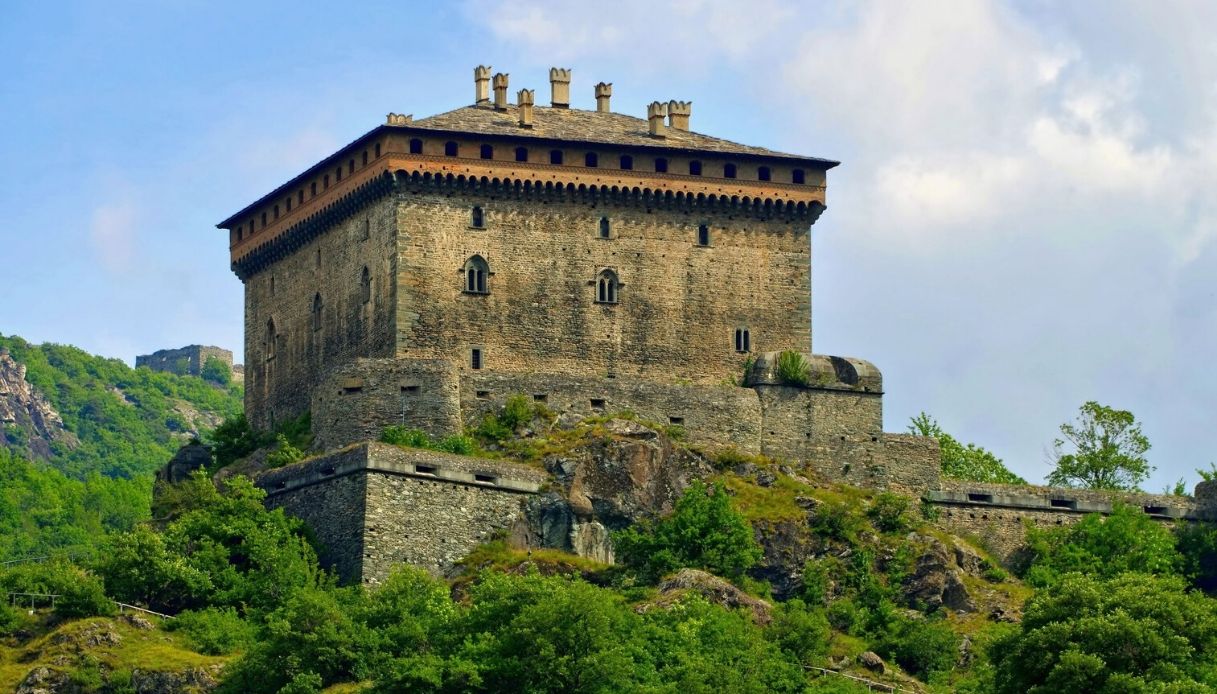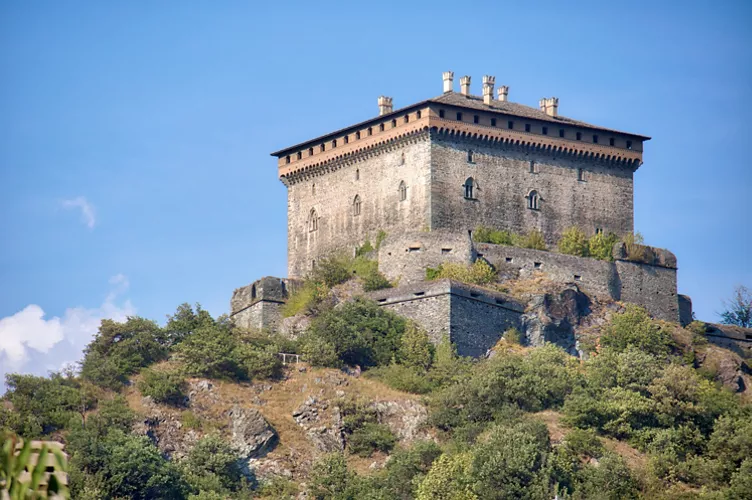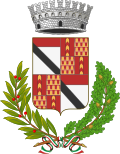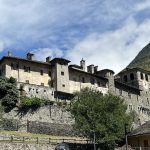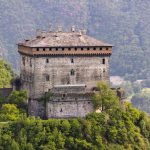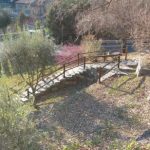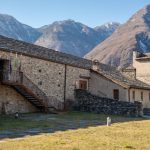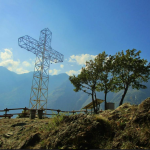
Verrès The castle of Verrès
A castle among the wonders of the Forest
The Castle of Verrès What does the Castle of Verrès look like?
The Castle of Verrès can be accessed via an old mule track that starts from the steps in Emile Chanoux Square and reaches the foot of the castle’s 16th-century ramparts at the point where the entrance opens, once preceded by the main drawbridge and still flanked by a secondary one reserved for pedestrians.
On the portal one notices the coat of arms of Count Renato di Challant and a Latin inscription praising the great Count Renato who embellished the interior and equipped the exterior with warlike structures.
Entering the castle, one notices windows, portals, and volumes of different shapes and styles, indicative of a succession of interventions.
The three floors of the building are connected by a monumental stone staircase.
The rooms are bare, but it is interesting to observe the symmetry of the spaces, the rooms intended for the arms and guards on the ground floor and the rooms reserved for the lords, on the second floor.
The latter gather sunlight thanks to elegant mullioned windows, that is, divided into two parts, while the large dining room is connected by a walkway to the master kitchen, which has three large fireplaces.
To learn more, we recommend a guided tour of about 30 minutes.
We leave you with a little mystery: numerous strategies were used to make the castle invincible and unassailable, and … particular is the trap at its entrance that allowed enemies to be defeated even if they managed to enter the castle!



The castle of Verrès The History
The first mandatory stop is undoubtedly the castle of Verrès, a magnificent example of perfectly cubic medieval military and feudal architecture that mightily dominates the village below from a raised rock outcrop.
The castle, initially owned by the De Verretio lords, was later bequeathed to Ibleto di Challant, who in 1390 set about the work that gave the building its present appearance.
However, it was Renato di Challant who renovated much of the building in 1536: he had a wall constructed equipped with embrasures and polygonal offensive turrets, made the entrance more secure by the construction of the antiporta with drawbridge and the opening of loopholes, provided for the opening of new cross windows and new arched doors, and enriched the interior with new furnishings.
After the Challant family died out in the early 19th century, the castle was abandoned but later saved thanks to a group of Piedmontese intellectuals who shared a passion for the Middle Ages.
What does the castle of Verrès look like? You can access the Verrès Castle via an old mule track that starts from the steps in Emile Chanoux Square and reaches the foot of the castle’s 16th-century ramparts at the point where the entrance opens, once preceded by the main drawbridge and still flanked by a secondary one reserved for pedestrians.
On the portal one notices the coat of arms of Count Renato of Challant and a Latin inscription praising the great Count Renato who embellished the interior and equipped the exterior with warlike structures.
Entering the castle, one notices windows, portals, and volumes of different shapes and styles, indicative of a succession of interventions.
The three floors of the building are connected by a monumental stone staircase.
The rooms are bare, but it is interesting to observe the symmetry of the spaces, the rooms for the arms and guards on the ground floor and the rooms reserved for the lords on the second floor.
The latter gather sunlight thanks to elegant mullioned windows, that is, divided into two parts, while the large dining room is connected by a walkway to the master kitchen, equipped with three large fireplaces.
We recommend a guided tour of about 30 minutes to learn more.
We leave you with a little mystery: numerous strategies were used to make the castle invincible and unassailable, and … particular is the trap at its entrance that allowed enemies to be defeated even if they managed to enter the castle!

